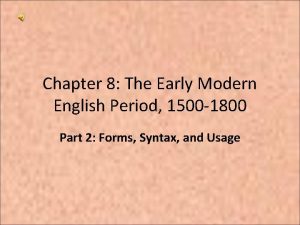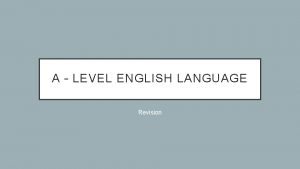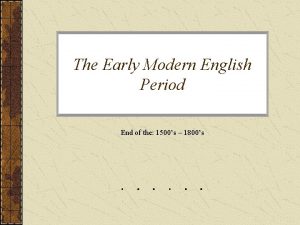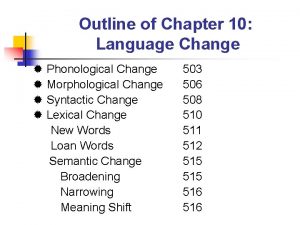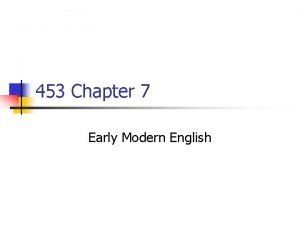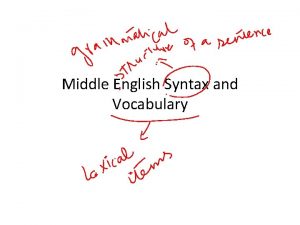Early Modern English syntax The syntax of EMod





- Slides: 5


Early Modern English syntax The syntax of EMod. E is relatively similar to Pd. E, just like its morphology, but of course, there are some differences – and sometimes, even what looks similar may mean something different. The structure of the sentence in Early New English is conditioned by the previous development of its morphology. With the practical loss of endings by the nouns and adjectives, their position in the sentence becomes quite relevant to the meaning they render - so, the direct word order prevails, the subject precedes the predicate in non-emotional sentences, and the object is shifted to the position after the predicate. Agreement as a means of grammatical connection of the words in the sentence is limited to the demonstrative pronouns that preserve their plural form.

A true innovation is observed in the structure of the sentence as auxiliary do is introduced. It appears in all types of sentences: declarative, negative and interrogative containing the Present or Past tenses of the Indicative Mood and the Imperative Mood. As far as the general organization of the sentence is concerned, a new phenomenon arises the structure of the sentence becomes nominative, that is a subject in the nominative case becomes a necessary part of it. At the same time impersonal sentences, where the doer of the action was indefinite had special structure without the subject, having the predicate and the object in the dative case, sometimes the object merged with the verb.

The use of the auxiliary do One of the crucial differences between EMod. E and Pd. E is in the use of do as an auxiliary. In Pd. E, do functions as a “dummy” auxiliary. In EMod. E, the situation is rather different: do can be used – optionally – in such cases, i. e. in the Simple Present and the Simple Past, when there is no other auxiliary. In EMod. E, main verbs can be directly negated by not, and can undergo conversion, too. So the situation is different. For example: Think not that I am come to destroy the law

Examples for clarification: Modern Examples: She does love him Little did he know about it Can you come to the party? I can play the piano. Early modern examples: Do not think that I have come to abolish the law’ do not even the publicans the same? do not even the tax collectors do the same? ’

